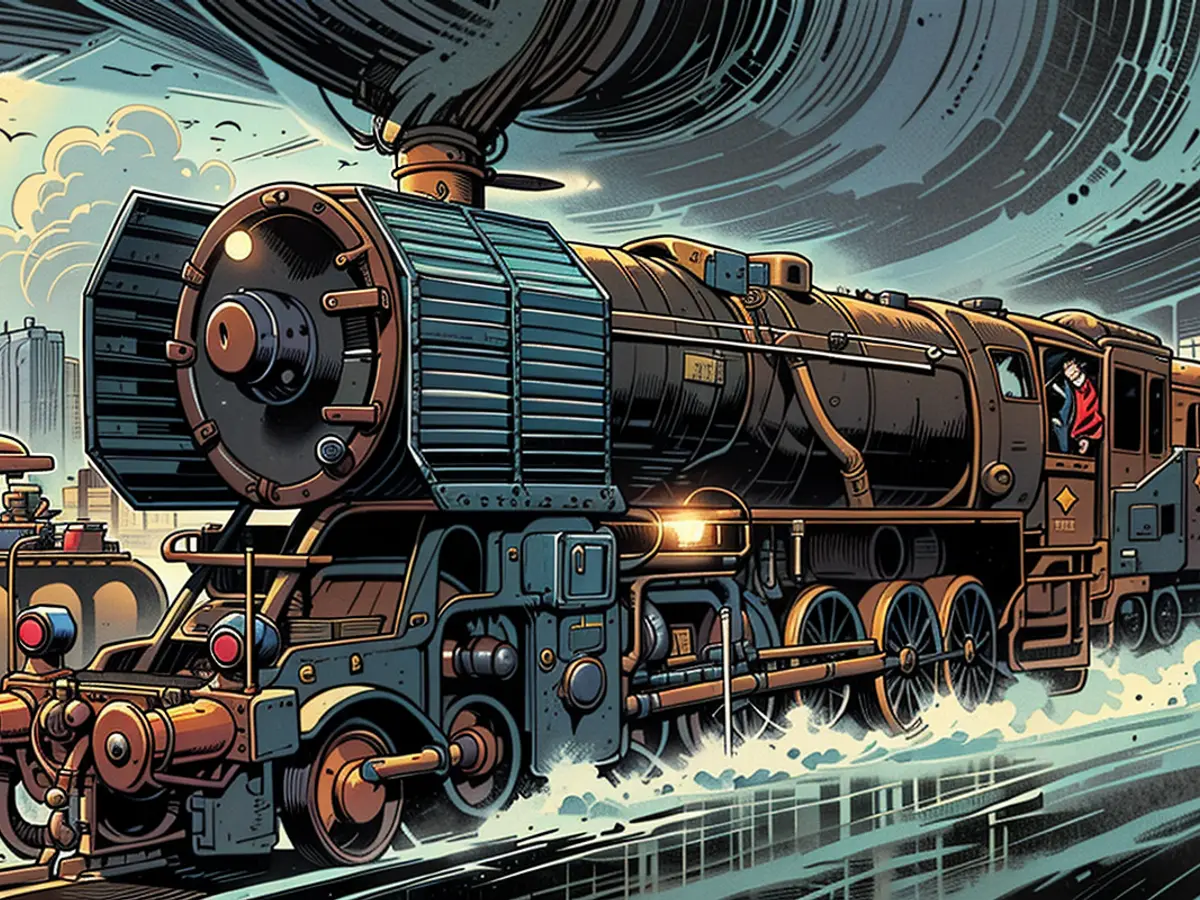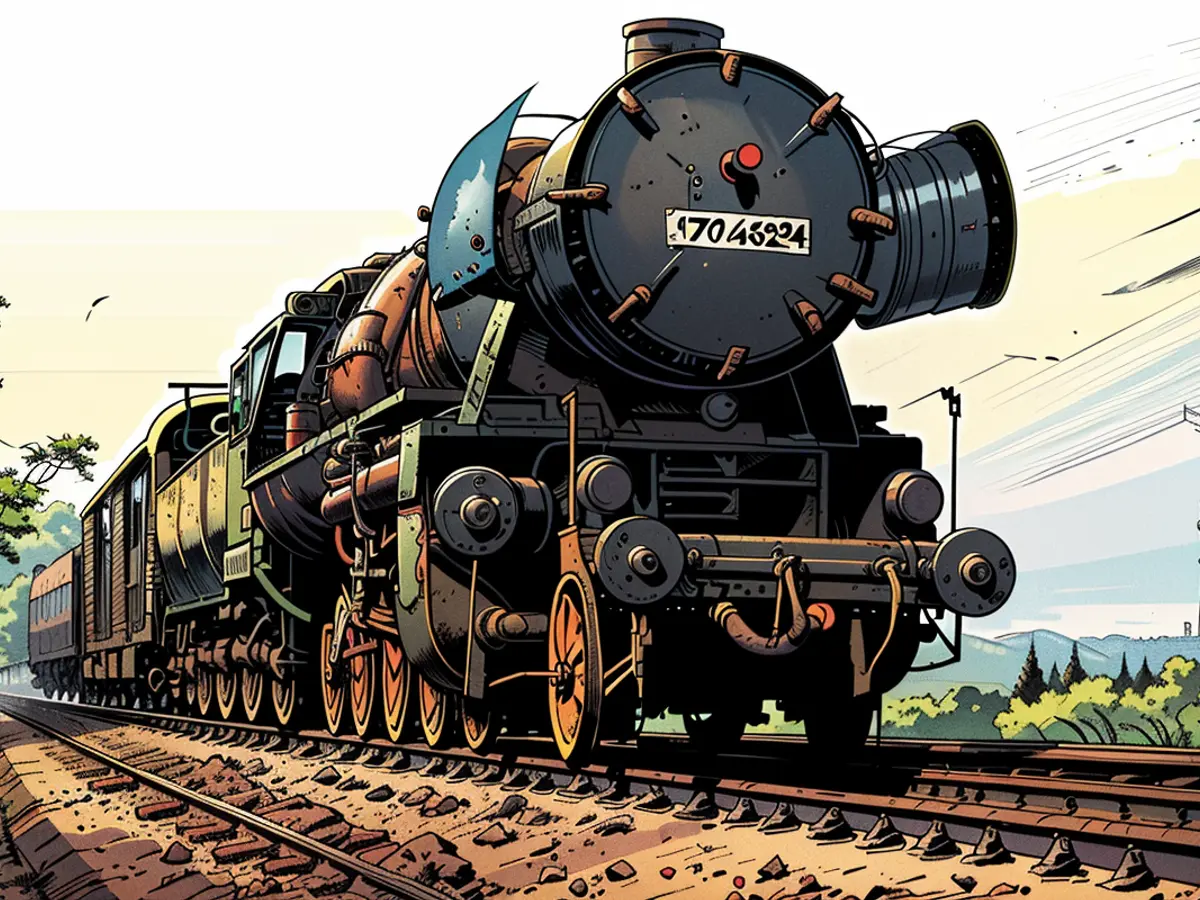BR 52 series - Where Hitlers war trains are still in use today
The Third Reich's war machine relied on the rail network rather than the autobahn. Hitler himself had ordered the construction of 100,000 trucks for military preparation, as they were more flexible. However, after the attack on the USSR, the superiority of the railways became apparent. The tracks became longer, frost and mud washed away roads, and trucks were reliant on scarce oil, while locomotives were powered by coal at the time.
For war use, the Baureihe 52 was designed, forsaking rare metals and allowing for faster construction than the predecessors of civilian times. Although the immediate predecessor, the BR 50, had already made many simplifications.
A War Locomotive for All Purposes
The goal was to produce only one standard locomotive that could be built by all manufacturers. The locomotive should not only be easy to manufacture but also meet war-related requirements. Thus, the axle load could not exceed 15 tons, allowing it to be used on secondary lines. It was designed for temperatures as low as minus 35 degrees. To help locomotive drivers and stokers survive the winter in Russia, the cab was enclosed. Tender and locomotive were connected with a folding tarpaulin. All frost-prone parts were placed under the covering, which otherwise would have been black locomotives were painted in tarpaulin gray, rare metals were replaced with steel parts, and over 1,000 parts were saved.
A locomotive could move a train of 2,000 tons in the flat with 50 km/h. At the peak of production in 1943, 51 locomotives were completed each day. Hitler's special train to America was initially pulled by high-speed passenger locomotives of the Baureihe 01.10 with streamlining, but it was later switched to war locomotives. In the end, the war locomotive 52 became the most produced locomotive in Germany – over 7,000 units were produced.
In Service in the East until the 1980s
After the war, the war locomotive was not only used in FRG and GDR but also in almost all formerly occupied countries. The most remarkable aspect is its long service life. The war locomotives were designed for a short life of only 6 to 10 years. In reality, they were still in regular service in the DDR and in other Eastern European countries until the end of the 1980s. In West Germany, the 52ers were retired in the early 1960s.
Last Veterans in Bosnia-Herzegovina
Apart from museum locomotives that perform trips for enthusiasts, a few units of the Baureihe 52 are still in service as works locomotives. Two locomotives transport 2,000 tons of coal from a mine in the Bosnian-Herzegovinian Šikulje to a power plant. Over 70 years after commissioning. A depot in Bukinje keeps the last five veterans in operation. Economically viable operation cannot be achieved. However, in Bosnia-Herzegovina, there was a lack of money to buy new diesel locomotives. The war locomotive 52 is used to fuel the coal from the mine, so no diesel needs to be purchased.
The Baureihe 52, designed during World War II for war-related needs, continued to serve in many countries beyond Germany and the Soviet Union well into the '80s of the Second World War era. Despite being initially planned for a short lifespan of only 6 to 10 years, these war locomotives proved remarkably durable, remaining in regular service in the Eastern Bloc until the end of the 1980s.
Germany's military reliance on railways during the Second World War was evident even in the use of their locomotives. For instance, despite Hitler initially using high-speed passenger locomotives for his special train to America, the trip's locomotive was later switched to war locomotives, such as the Baureihe 52.
In the 1980s, the German Democratic Republic and other Eastern European countries continued to rely on the robust and versatile Baureihe 52 war locomotives, which had been designed and produced primarily for military purposes during World War II.









